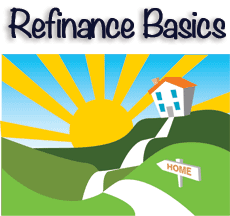 How does refinancing work in terms of refinancing a mortgage? If you want to learn how to refinance a mortgage it is first necessary to understand the term. Fundamentally, it means that you are replacing your existing mortgage with a new one in order to get a lower interest rate or cash-out when you close your current mortgage.
How does refinancing work in terms of refinancing a mortgage? If you want to learn how to refinance a mortgage it is first necessary to understand the term. Fundamentally, it means that you are replacing your existing mortgage with a new one in order to get a lower interest rate or cash-out when you close your current mortgage.
You might take a mortgage on your home and happily continue repaying month after month for years, and then see the opportunity to get a different mortgage at more attractive rates. You must then close you current agreement, and start up a new one – either with the same lender or a different one. Generally, if you make this decision, your current lender may offer you a better deal in order to retain your business. You are then in a negotiating situation.
How Does Refinancing Work
There are several steps involved when you refinance a mortgage. Fundamentally, you are applying for a completely new loan, rather than changing the conditions of your existing mortgage. You must therefore go through the entire process of applying for a mortgage as if you did not already have one.
When you apply to refinance, your lender will review the following, just as you did with your original mortgage:
- Your credit record, credit score and credit history of repayments. Your lender will check with Experian, Equifax and TransUnion, and make an assessment of your credit-worthiness. If you have missed a few mortgage payments in the past, this will count against you, but not significantly if you have quickly rectified the situation.
- Your employment history will be checked, along with your current income to check the affordability of the mortgage you are seeking. You must have a good record of continuous employment, with no rapid changes of employer.
- If you are retired and are seeking a better deal for your mortgage, your retirement income and assets will be investigated, and the lender will make sure you have sufficient income and reserves to meet your mortgage commitment.
Sure, they will take into consideration that you have already paid off a good proportion of the principal sum originally borrowed, and your repayment record to your existing mortgage account will be taken into consideration, but all of the above must still pan out to your advantage as it would have to have done when you were granted your first mortgage.
Three Ways to Refinance a Mortgage
There are three different ways of doing this, so how does refinancing work with each of these? Here is simple explanation of each:
Rate and Term Refinance
Rate and term refinance is exactly what its description suggests: you can change your old mortgage for a better new one, with a more favorable interest rate or term, or even both. You are not changing the amount you still owe, but you can switch from a 30 year a 15 year fixed rate agreement for example. Alternatively, you could change the interest rate from 4% to 3% – a 30 year mortgage at 4% to the same term at 3%.
You can also achieve both: you can switch from 30 years at 4% to 20 years at 2%, and end up paying much the same, but over less time. With such mortgage refinance agreements closing costs can be added, and you cannot increase the mortgage principal by more than $2,000 or 2% of the new mortgaged sum, whichever is the lowest.
Cash-Out Refinance
With a ‘cash out’ refinance deal, you can either combine a first and second mortgage on a property, consolidate your debts by combining them into your new mortgage, or receive cash in your hand at closing to be combined into your new mortgage agreement. With this type of mortgage refinance, you can walk away with cash in your hand (without the 2% restriction) based on the equity of your home.
You would usually need to have a good credit record with a high score to get this type of agreement, and they are usually offered only on lower loan sums where the bulk of the principal has been cleared. However, you have to repay the cash as part of your mortgage, and your equity is reduced correspondingly.
Cash-In Refinance
Sometimes borrowers have saved or inherited a cash sum that can be used to reduce the principal on their mortgage. By making a cash payment, this type of cash-in refinance enables them to get a lower interest rate on the balance owing, or reduce the term to completion.
By reducing the loan-to-value ratio on your home to 75% as opposed to 80%, you will be able to get a better interest rate. There are also benefits to be had with respect to mortgage insurance below 80% LTV you would normally pay no private mortgage insurance.
If you are not sure which of these various types of refinance works, require more information on how to refinance a mortgage or would like more details on the best way to release some of the equity on your home, then check out an independent financial advisor who will give you good advice independent of any specific lender or bank.



About The Author: Kenneth Le
More posts by Kenneth Le